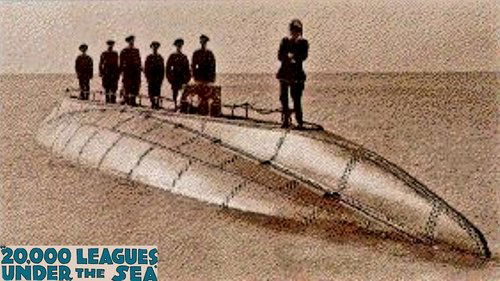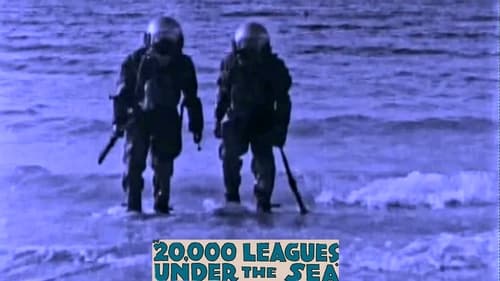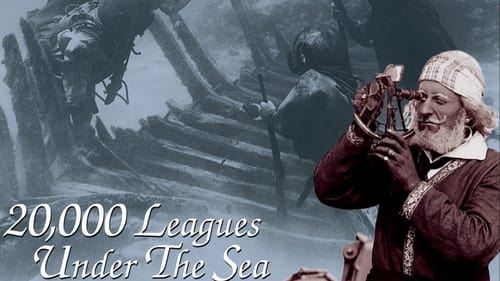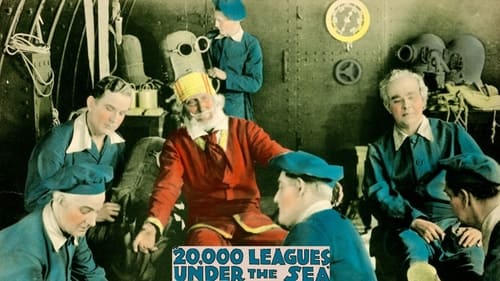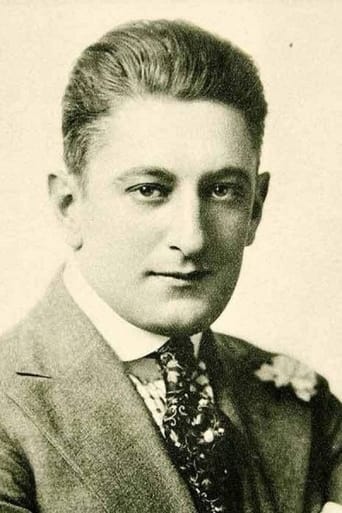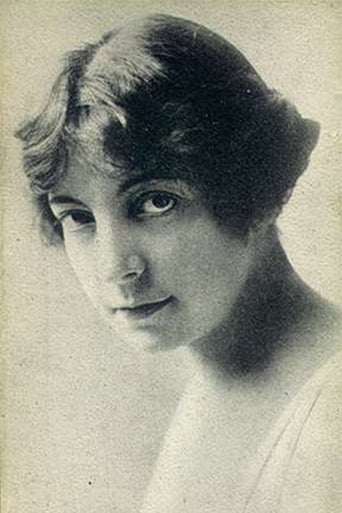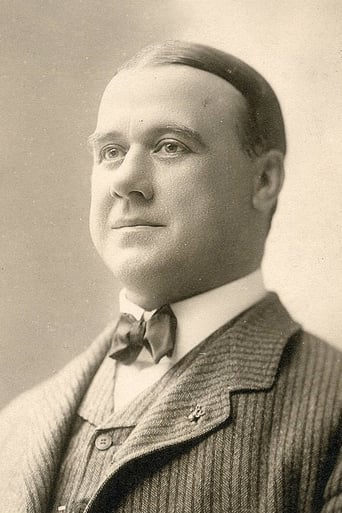Interesteg
What makes it different from others?
Inclubabu
Plot so thin, it passes unnoticed.
RipDelight
This is a tender, generous movie that likes its characters and presents them as real people, full of flaws and strengths.
Jenna Walter
The film may be flawed, but its message is not.
wes-connors
White-bearded mystery man Allan Holubar (as Captain Nemo) trolls the seas, looking for revenge against William Welch (as Charles Denver). We begin when Mr. Holubar's invention, an underwater ship called a submarine, is mistaken for a sea monster. Commanding the "Nautilus", Holubar wants to avenge the abduction of his wife and find his "child of nature" daughter Jane Gail (as Princess Daaker). He defeats, then compassionately rescues a crew of attackers, and goes near "Mysterious Island". Coincidently, enemy Welch and daughter Gail end up there, the latter falling in love with Matt Moore (as Lieutenant Bond)...Reportedly, the first submarine photoplay ever filmed, "Twenty Thousand Leagues Under the Sea" begins with a tribute to the Williamson brothers, "who alone have solved the secret of under-the-ocean photography." The brothers Ernest and George Williamson appear in an on screen introduction, tipping their hats (and looking like they could have had careers as actors). The film is mainly notable for their work in pioneering underwater photography; otherwise, this adaptation of Jules Verne's popular novel (with additions from his "The Mysterious Island") is sluggish sailing. It also corrupts the source material.***** Twenty Thousand Leagues Under the Sea (12/24/16) Stuart Paton ~ Allen Holubar, Jane Gail, Matt Moore, William Welch
Cineanalyst
This screen adaptation of Jules Verne's novel seems to have been timely. Two recent innovations changed the story's relevancy. The film was released in 1916, when German U-Boats were showing the effectiveness of submarines in war, including the sinking of the Lusitania. Verne's science fiction had only recently become more fully realized. Additionally, deep sea travelling was to be exploited by science. Indeed, some of the best sequences in this film are just of fish and sharks in the marine gardens as the characters look through Captain Nemo's magic window. Another invention, the motion-picture underwater photography by the Williamson brothers allowed for Verne's fiction to be more fittingly portrayed with cinema. Certainly, this was a remarkable effect for the art form in 1916, and I think the underwater scenes remain the best parts of this film, with the exception of the cheesy octopus attack.Above water, the plot is plodding and confused. Unfortunately, the filmmakers tried to combine Verne's "Twenty Thousand Leagues Under the Sea" with his sequel to it, "The Mysterious Island". Consequently, through most of the photoplay, there are two parallel narratives loosely and convolutedly connected. Nemo is also transformed into a dark-skinned Muslim and his vengeful mission is changed, and a lengthy and foolish epilogue is added to make sense of the hodgepodge. The science-fiction parts faithful to the title novel are superior to and mix poorly with the added-on exoticism. In addition, the acting is dated. On the other hand, the shots of fish, sharks, the submarine and the diving suits are straightforward and retain interest especially due to the age and precedence.
John W Chance
This is Carl Laemmle's color tinted two hour and twenty minute Universal production of Jules Verne's classic. If you thought Laemmle's versions of 'Dracula' (1931) and 'Frankenstein' (1921) didn't follow the novels they came from, you'll throw up your hands here. However, it is the first film to show extensive real underwater photography (shot in the Bahamas), with the aquamen actually battling live sharks. For these sequences alone, it is a must see. How they must have amazed movie patrons back in 1916! (They still amaze.) The story of Captain Nemo's tortured sorrowful soul, saddened by mankind's cruelty, and Verne's masterful prose visualization of the wonders of the oceans have been mostly thrown out in favor of a jungle girl's island rescue story, with her as Nemo's long lost daughter, and he himself an Indian prince! Talk about rewriting the book, before this last revelation there is an intertitle, "Captain Nemo reveals the tragic secret of his life, which Jules Verne never told." There are many intertitles referring to the "Mysterious Island," but it's doubtful that all of this jungle story material is from Verne's book of the same name. Of course, this is not the worst revision of a classic story. Though dozens have been made, the worst has to be Disney's 'The Little Mermaid' (1989) who doesn't die at the end, but marries the prince and lives happily ever after instead.Nemo, with his square beard and Santa Claus outfit looks like those old early twentieth drawings of 'Father Christmas.' Professor Arronax and Ned Land are cast to the side as peripheral characters. Although there is often some quick cutting, the camera hardly ever moves, as if a play is being photographed, and there are almost no close ups or medium shots. The acting is little more than the clichéd, broad, exaggerated gesturing so common to the earliest era of film making (1903-1915.) Griffith began toning it down with 'Intolerance' in 1916, but Mae Marsh in 'The Battle of Elderbush Gulch' (1914) is the equal of Jane Gail here for flighty, flippity floppity jumping and prancing around. There were films that had more creative camera-work during this decade than the deadly, static cinematography here by Eugene Gaudio; besides the work of D.W. Griffith in 'The Birth of a Nation' (1915) and 'Intolerance' (1916) there was the fantastc Italian film 'Cabiria' (1915) and some of the Chaplin shorts.The real high point of the film, of course, is the spectacular underwater photography by Geogre and Ernest Williamson, who are not only given specific mention in the opening credits, but also are shown in live action tipping their hats to the audience. All their scenes are the highlights of the film. At last a moving camera! Finally, this expanded new print (others were as short as 81 minutes) has a wonderful musical score by Brian Benison done in 1991. He wrote new scores for Stan Laurel's great 'Oranges and Lemons' (1925) as well as Douglas Fairbanks' 'The Three Musketeers' (1921).The underwater photography gets a 10, but the rest is too 1910ish, so I have to give the movie a four and half.
mlevans
This is a most intriguing and entertaining film. While some flaws can certainly be pointed out, it still stands up as a fine feature film.The story is certainly different in this version. This Nemo is a Boy Scout, helping those in need and interested in revenge only in the case of one personal enemy. As I recall from reading the book and seeing one of the color, sound versions (both about 30 years ago), Captain Nemo was a real sob, intent on extracting "revenge" on every ship he came across. (He was also about half the age of this Nemo.) Still, the twists make for an interesting story, as does the incorporation of "Mysterious Island," another Jules Verne masterpiece, into the story.Of course the film is best remembered for the amazing early underwater film sequences. These are something to see – especially considering the year. My only criticism of the film would be that Paton perhaps got a little carried away with showing his sequences of underwater sights. Of course, who could blame him? No one else had put anything remotely like this on screen in a feature film before. There is almost a quasi-documentary feel to the film, thanks to the underwater scenes and early SCUBA outfits.Alan Holubar is outstanding as the aging (and the young) Captain Nemo, while the rest of the cast is solid. The only exception is Jane Gail's horrid overacting as the princess. This is strange, considering that she handled the "child of nature" role with some credibility and little if no overacting. Perhaps the female histrionics were expected in 1916. (At least Robert K. Klepper identifies Gail as playing both roles in "Silent Films, 1877-1996." IMDb does not identify the princess.)In any case, whatever flaws one may find are dwarfed by the realization that it was so advanced for its time. It's still entertaining, as well, and a great addition to any collection.
